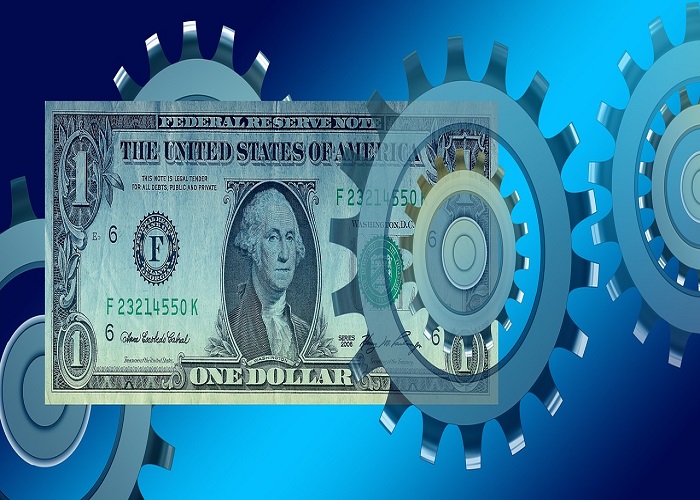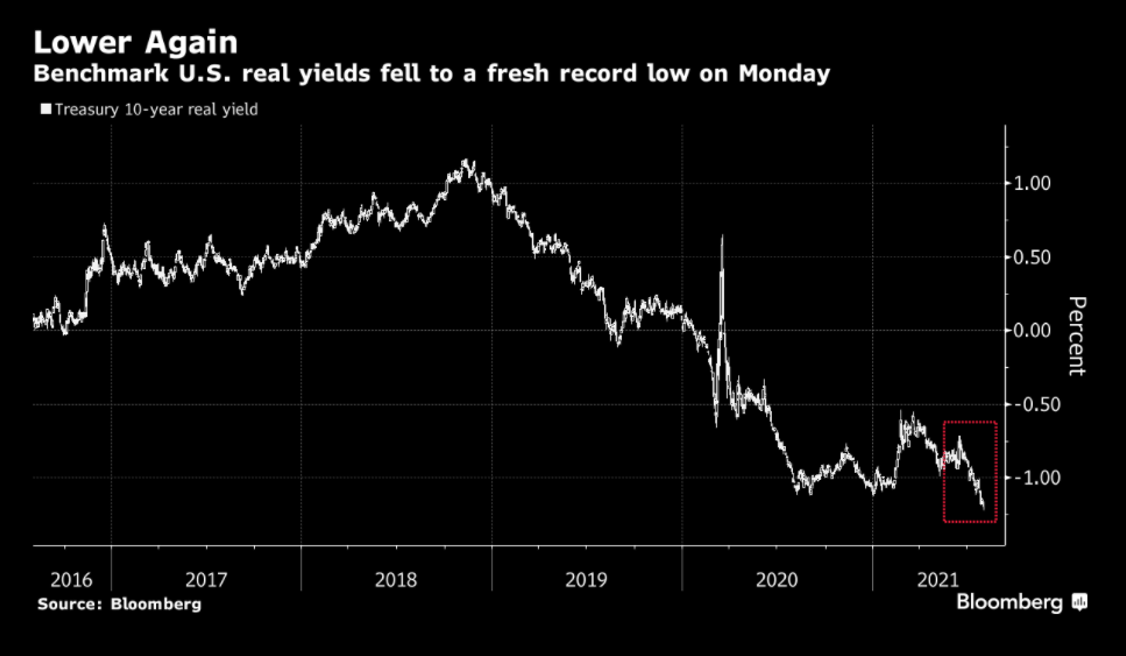If you would like to receive weekly updates like this, sign up here.
I recently hosted a webinar for subscribers to Boom Bust Bulletin. I was joined by Property Sharemarket Economics Director, Akhil Patel.
During the webinar we encouraged attendees to ask questions for Akhil and me to answer.
And there was a recurring theme to these: people wanted to know about debt, inflation, and interest rates both now and for the duration of the 18.6-year Real Estate Cycle.
And how do such things influence long-term borrowing to take advantage of the current cycle.
Perhaps you may be feeling or thinking along similar lines.
If so, then read on and let’s discuss what’s coming next using our knowledge of the 18.6-year Real Estate Cycle and 200 years of history to guide us.
Disruptions and bottlenecks.
Let’s talk inflation.
We firstly need to put to bed this notion of hyperinflation just waiting to ambush us and return us all to Germany’s Weimar Republic.
The Weimar Republic is remembered in history for one of the worst examples of hyperinflation in the 20th century.
Between 1921 and 1923 a combination of war debt, reparations, and very little economic resources to back the money printing saw incredible hyperinflation break out.
As an example: a loaf of bread cost 160 marks in 1922. By 1923, that same loaf cost close to 5 trillion marks!
That’s an example of hyperinflation. The standard definition of hyperinflation is a rapid, excessive, and out-of-control general price increases in an economy. This is simply not going to happen now.
We are in a totally different economic situation.
What’s more pertinent for us today is the continued “forward guidance” provided by the Federal Reserve Chairman Jerome Powell that inflation in the US is what they call ‘transitory’ and therefore after a brief spike will drop to a more “normal” 2% or below. Other central bankers are saying the same thing.
You see, there has been a bit of a war of words between him and the market commentators about this subject.
Jerome Powell has not changed his stance that inflation, which spiked to over 6% last quarter, will dissipate.
He also said that, like now, if it spiked above that 2% average level it wouldn’t mean the US Fed would instantly raise rates to get ahead of it.
To be fair, they have been true to their word.
The cash rate in the US hasn’t moved.
But the bigger picture was the bond market.
Hola Darren (Wilson)! I’m a Venezuelan living in US. I just recently started to read your bulletin and some of the books you have recommended.
Let me tell you, I’m mesmerized by your content and eager to learn more about the cycle and how can I profit from it in the next years.
I want to thank you and the entire team for providing this info, and I’m looking forward to keeping the learning process from y’all…
Seize the day!
Daniel – July 2021
Late 2020 and into the start of 2021, long dated bond yields were rising. This showed, along with other economic indicators, the US economy was continuing to improve out of recession.
However, the direction of yields has since retreated some.
This has coincided with a sudden spike of inflation. At this stage, no one is sure just how long this spike will last above the US Feds stated 2% average.
Because if inflation stays at current levels, its considered bad for long dated bonds, as rising inflation reduces their value.
Who wants to hold a 10-year bond where inflation erodes the capital value whilst falling yields pushes the price you must pay for these same bonds higher?
So, who is right?
And why does it make such a huge difference for your own long-term investing and borrowing plans?
Let’s start with this fact; the US Fed chairman has zero idea what he is doing, like Janet Yellen, Alan Greenspan, Ben Bernanke etc.
Cool. Glad we know where we stand with that.
The first point is obvious. And that is, the cure for governments everywhere to get their respective economies out of COVID recessions is to borrow and spend.
And like all good governments, they like to spend big on infrastructure.
And so, demand for commodities has skyrocketed. This demand has pushed prices higher and therefore created a spike of inflationary pressures in this space.
As many of these commodities are found in technology that you and I rely upon so dearly we all then indirectly contribute.
The other main driver here is the ongoing lockdowns (or threats of lockdowns) as the Delta variant of COVID sweeps the globe.
There are now commentators pointing out worries that a weaker period lies ahead for the economic reopening from the health crisis.
Traders are awaiting key U.S. jobs data this week to gauge the recovery and monitoring the impact of price pressures sparked by pandemic-related disruption and bottlenecks.
One such commentator is Shana Sissel, Spotlight Asset Group chief investment officer.
From a recent interview on Bloomberg Television, referring to the coronavirus variant, she said.
“I don’t think the market is concerned about delta as much as it’s concerned about how it impacts inflation,”… “The longer we have delta spread globally, the longer the supply chain disruptions will continue.”
So, there’s the second apparent cause of inflation, that of continued pressures within the global supply chains.
This cause prices for available stock to rise due to competition and high demand. This therefore is a more broad-based measure simply because we are a consumer society and rely on cheap goods from overseas.
And those same goods are now rising in price.
So that’s the view from the ground concerning inflation.
What about borrowing?
Is now a good time to be leveraging higher to acquire income producing assets or a home?
This is they say the ‘golden era of borrowing’.
It’s more accurate to suggest there is a window right now where you can borrow to invest and obtain a good return for such an investment that covers the cost of the loan.
It is also the US Feds stated plan to allow inflation to rise without raising short term cash interest rates. As I said, that presents a window for refinancing or borrowing to invest knowing the US Fed has, for the moment, got your back.
It is also a good time to remember that in an inflationary environment, income producing assets really start to outperform.
To be honest, this is all you need to know.
So, I’ve tried to lay the groundwork above for you as briefly as I can.
Now the “voila” moment.
I’m going to tell you exactly what you need to know.
You ready?
First, remember that Federal Reserve doesn’t know what it’s doing.
It’s not just my opinion. Former Fed Chairman Ben Bernanke admits this very fact in his book, The Courage to Act. The Fed Chairman before him was Alan Greenspan. He ran the Fed for 18 years. In 2008 he went before the US Congress and admitted he didn’t see the crisis coming. As reported by The Guardian at the time:
‘I have found a flaw,’ said Greenspan, referring to his economic philosophy. ‘I don’t know how significant or permanent it is. But I have been very distressed by that fact.’
Still think the US Fed knows what it’s doing.
The Fed is endogenous to the system. ‘Endogenous’ means that ‘the existence of a disease or symptom is not attributable to any external factors.’
In other words, the Fed acts within the system: it does NOT supervise or control it. Therefore, when Chairman Powell talks about how he hopes to manage inflation he does not know what he’s doing.
Here’s what you need to know. The system is based upon the “Economic Rent”. David Ricardo first identified this in the early 1800s. The Economic Rent is the surplus that arises when our economies grow. It shows up most clearly in rising property prices.
When the Economic Rent is enclosed — that means if the annual rental value of the land is traded as a capitalised price — we MUST get a real estate cycle.
It’s as simple as that.
Voila!
This means that the US economic system is completely forecastable.
It can be forecasted quite simply with a very good understanding of the ‘Economic Rent’.
History demonstrates – and I can prove it to you – that when you get a land boom, inflation always rises. It does not mean hyperinflation. But inflation is coming.
Once the Rent is enclosed, as it is in the US, UK, Australia and practically everywhere else on the planet now, the system will run like clockwork.
And there is nowhere better to learn this yourself than by taking up a membership to the Boom Bust Bulletin(BBB).
It will teach you the history of the 18.6-year Real Estate Cycle, why it repeats and how you to can forecast what’s to come next.
You will find out that talk about inflation and rising interest rates etc, are all white noise.
They are secondary to the biggest market of all, the land market.
So, learn about it!
Unlike the current and past US Fed chairpersons.
Look, I might be a bit harsh on them.
Jerome Powell does not understand this. Then again, he is not employed to understand this.
His job is to maintain the status quo.
It is very profitable for those that ‘own’ the system, and they like it that way.
So, its time you learn this system, and start to profit from it yourself.
Just like attendees to our recent BBB webinar were doing for themselves.
So come and join them.
For just $4USD a month.
Incredible value.
Don’t wait, sign up now.
Best Wishes,

Darren J Wilson
and your Property Sharemarket Economics Team
P.S – Find us on Twitter under the username @PropertySharem1
P.P.S – Go to our Facebook Page and follow us for right up to date information on the 18.6-year Real Estate Cycle.



